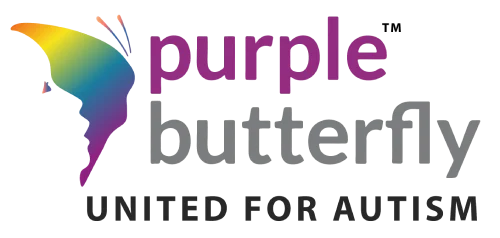As parents and guardians everyone desires a happy and healthy child, and so it naturally follows that you keep a lookout for health issues which may impair the normal growth and development of your little one.
Autism or ASD is a disorder which generally becomes observable in the early years, say around 18 – 24 months and because we have no regular pathological screening tests in place, the only way to recognize at home is through careful observation of the infant.
As per statistics available globally, ASD is steadily on the rise for a variety of reasons. Adding to this rather vexing fact is that the larger percentage of girls and children from suburban and rural areas go unnoticed and are deprived of lifelong help and management.
That any child, even in a developed country, can go denied of medical care and help and can get consequently impacted emotionally and socially is quite sobering.
It, therefore, becomes imperative that children of all backgrounds and sexes are diagnosed early on and avail the benefit of the latest medical diagnosis and treatment and thereafter prognosis recommended by a specialist to enable them to lead fulfilling and productive lives.
You may well ask – But why is it so important to get children screened and treated in case of detection of low, mild and certainly high- risk cases? What happens if a child remains undetected?
The answer is quite simple. ASD is a lifelong disorder, and not an ailment that the child can grow out of on your own as she grows bigger and acquires natural immunity. It needs proper prognosis by a medical expert and subsequent management. There are disturbing real time reports of individuals who have suffered needlessly as children till the detection and treatment of the disorder. (https://undark.org/2019/11/28/early-detection-autism/)
Thanks to modern medicine and treatment, it is perfectly possible for an individual with ASD to lead a normal life as an adult, perform at a job, enjoy different roles as a family member and live as productively as a non-ASD or typical individual.
Reversely, left untreated, there is a high possibility of a spinoff into several other complications as an adolescent/young adult and later as an adult, that may make both personal and professional life complex and challenging for the ASD or atypical individual. They may find it difficult to develop and maintain friendships, interact, and express themselves freely with peers and to understand what is expected behaviourally of them in social circles, at school and in the workplace.
Furthermore, there may be co-occurring health and clinical conditions as obsessive compulsive disorder, depression or anxiety, conduct disorder, attention-deficit or hyperactivity disorder.
The simplest way to begin is with simple list of signals that equips every parent/ guardian/ childcare provider/ teacher/ school psychologist to form an overall idea based on the child’s development. Keep it with you as a checklist of symptoms to watch out for in the child. However, it is important to remember that not all symptoms may manifest. Conversely, presence of symptoms does not always indicate a case of autism but may be indicative of related conditions such as Fragile X, Landau – Kleffner, Rett’s or Sensory Processing Disorder.
A medical referral is necessary in all cases.
The signposts to keep a lookout for –
- A delay in communication with others, including use of speech and gestures.
- Does not respond to one’s own name.
- Gets upset with a change of routine, including minor changes.
- Avoids, gets irritated and upset with physical signs of affection.
- May avoid most forms of contact.
- Does not look for approval or validation from mother for achievements and sharing of emotions.
- Shows little interest in people and objects around.
The above appear early in the life of the child and may hamper her social, emotional, and cognitive growth and development.
Autism Screening Tools used by paediatricians and specialists are used for screening and evaluation of children –
- Modified Checklist for Autism in Toddlers (M – CHAT – R) – is a test comprised of 20 questions designed for toddlers between 16 – 30 months.
- The Ages and Stages Questionnaire (ASQ) – is a broad screening test that assesses the challenges at specific phases of growth during the development of the child.
- Screening Tool for Autism in Children and Young Children (STAT) – This is an interactive tool that is used for screening of activities like play, imitation, and communication in a child. It comprises of a set of dozen assorted activities.
- Parents’ Evaluation of Developmental Status (PEDS) – This involves a parent interview to assess the development of the child with respect to motor, self- help, language, and other delays.
While the above are the screening tests followed by specialists in the US, they are being adopted globally gradually. M-CHAT-R is a common and popular screening test in most nations.
The American Academy of Paediatricians (AAP) and National Center on Birth Defects and Developmental Disabilities (NCBDD) have earmarked different milestones for detection of ASD. The former recommends a standard 18- and 24-months mark during the well-child checkups, while the latter indicates 9 – 18 -2 4- 30 months regimen.
It is always essential to stress that these checkups are just the preliminary and basic methods of detection and in case of need, a referral to a specialist is mandatory who will conduct a full risk assessment and advice on the management thereon.
To conclude, keep a keen lookout for any kind of restricted, stereotyped, or repetitive behaviour or movements in your child. Check for oddities in social skills. Flag it off to your paediatrician at the earliest so that an innocent child does not slip through the cracks due to ASD that may lead her to miss out on precious childhood and hinder normal growth beyond that.
In our next blog, we bring you some practical help for living and coping with an atypical loved one.
References:
https://www.autism.org/screening-assessment/
